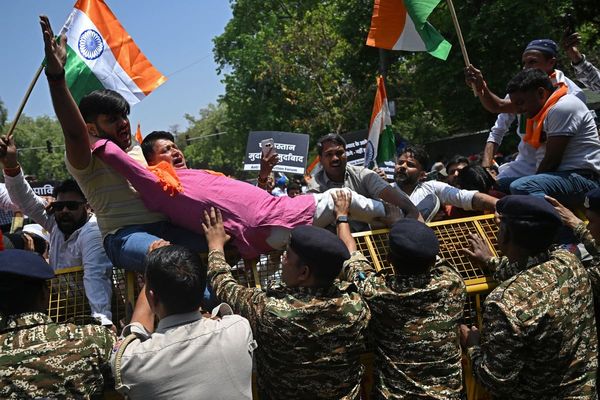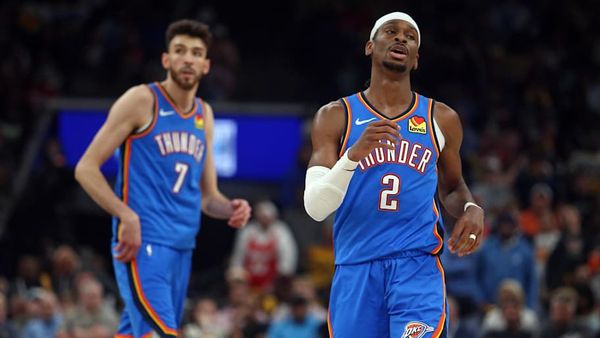I’ll say this for The Last of Us’s explosive latest instalment – it’ll get people talking. HBO’s post-apocalyptic video game adaptation began its second season in no mood to idle: last night’s tortuous and violence-crammed second episode was pure Event Television, precision-engineered to muster viewers around the now entirely hypothetical watercooler. It has been received obligingly – GQ rather hyperbolically dubbed it “one of the best TV episodes of the century”, comparing it favourably to Game of Thrones’s battlefield blow-out “The Long Night”. A better point of comparison might be “Baelor”, the season one Thrones episode in which Sean Bean bids adieu to his own head. That is to say – and spoilers follow, in case you couldn’t tell – things ain’t looking so peachy for Pedro Pascal.
The bulk of the episode centres on a protracted action sequence, as the snow-capped town of Jackson is besieged by a horde of “infected”. Events take a turn towards the end, however, and Abby (Kaitlyn Dever) – one of a gang of outsiders who’ve come in from Salt Lake City – gets the drop on Joel (Pascal), heretofore the series’ lead character alongside Bella Ramsey’s plucky Ellie. Exacting revenge for the murder of her father in the finale of season one, Abby shoots him in the kneecap before torturing and, finally, killing him. It’s traumatising and gruesome, and a rather seismic twist to detonate so early into a show’s run. At least, seismic is what it was going for. But now that it’s reached its big watercooler moment, The Last of Us has never seemed more hamstrung.
For all the parallels with Thrones, it might in fact be more appropriately compared to the 2019 live-action Lion King remake. Disney’s garish and high-budget blockbuster restaged the plot of the 1994 original pretty much beat-for-beat – making a fortune but courting the derision of critics for its lack of originality and overall pointlessness. The Last of Us isn’t as visually repellent as The Lion King, of course – the series has that heavy-duty aesthetic pizazz that audiences have come to expect from HBO productions (Game of Thrones; Euphoria; The White Lotus) – but it’s just as fatally enamoured of its source material.
In The Last of Us’s case, said source material consists of two video games: 2013’s The Last of Us (which was adapted into the first season) and 2020’s The Last of Us Part II (adapted into seasons two and the forthcoming three). There are points of divergence: season one swerved into original territory for its best episode, the moving and unexpected “Long, Long Time”, while this latest instalment’s big assault-on-the-town sequence likewise does not feature in the game. But these are exceptions: by and large, the story plays out on TV much as before, down to the same lines of dialogue, or even shot-framing.
Well, you might think, is that really such a bad thing? Both Last of Us games were effusively acclaimed, with particular praise given to their storytelling. The characters are interesting, the worldbuilding distinctive, the narrative compelling. For those devotees of the games who were clamouring for absolute fidelity in adaptation, The Last of Us is a dream. For the millions of viewers who had not played the games, the similarities are unnoticed anyway. The Venn diagram of people who are both a) aware of the adaptation’s methodology and b) bothered by it represents, ultimately, only a small portion of The Last of Us’s audience. But, visibly or invisibly, the pitfalls of such a doggedly literal cross-medium adaptation start to impact the end product.
An under-discussed problem with adapting the Last of Us games is just how much of their original brilliance lay in their technical complexity. The Last of Us Part II remains one of the most detailed and sophisticated video games ever made, thanks in part to a famously ruthless working environment behind the scenes; with the amount of credit that’s afforded to the storytelling, this technical acuity is often underestimated. But it’s also something that the TV series is unable to replicate – television, of course, being a medium with far less scope for novelty.
Which brings us back to the latest episode, and that death scene. For such an ostensibly huge twist, Joel’s death is something that the majority of viewers will likely have known about in advance – either through playing the game five years ago, reading spoilers online, or perhaps having learnt about it, as many people first did, when scenes from the game were leaked online months before the original release.
It’s hard to explain to non-gamers just how fervid the reactions to that twist were – and the vitriol that was directed towards the creators and the character of Abby. The game was sucked into the vortex of discourse we often refer to as the “culture war”. Leaving aside the grim bigotry of some of the backlash, it was, among other things, a testament to just how big of a deal it was to kill off a character like Joel. He was a modern totem of the video game medium, in whose shoes fans had spent dozens (or, in some cases, hundreds) of hours walking, over the course of seven years. Thanks to HBO’s fashionably short episode order, TV viewers have only really spent a few hours in Pascal’s company. When he is killed off in the series, you’re watching the distressing bludgeoning of some guy you’ve barely met. It’s not as impactful – how could it be?
This is not to neg too insistently on the series, which features handsome craftsmanship and strong acting, in this episode and elsewhere. But it’s also reaching a point where we have to question if there is in fact some conceptual, existential flaw with The Last of Us. It has remade a truly great video game with a faithfulness bordering on zealotry. What happens when people start losing their religion?
‘The Last of Us’ airs on Sky and NOW in the UK, with new episodes released every Monday







